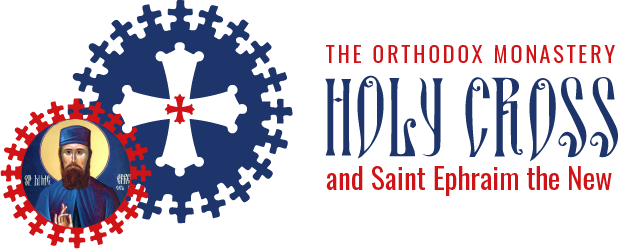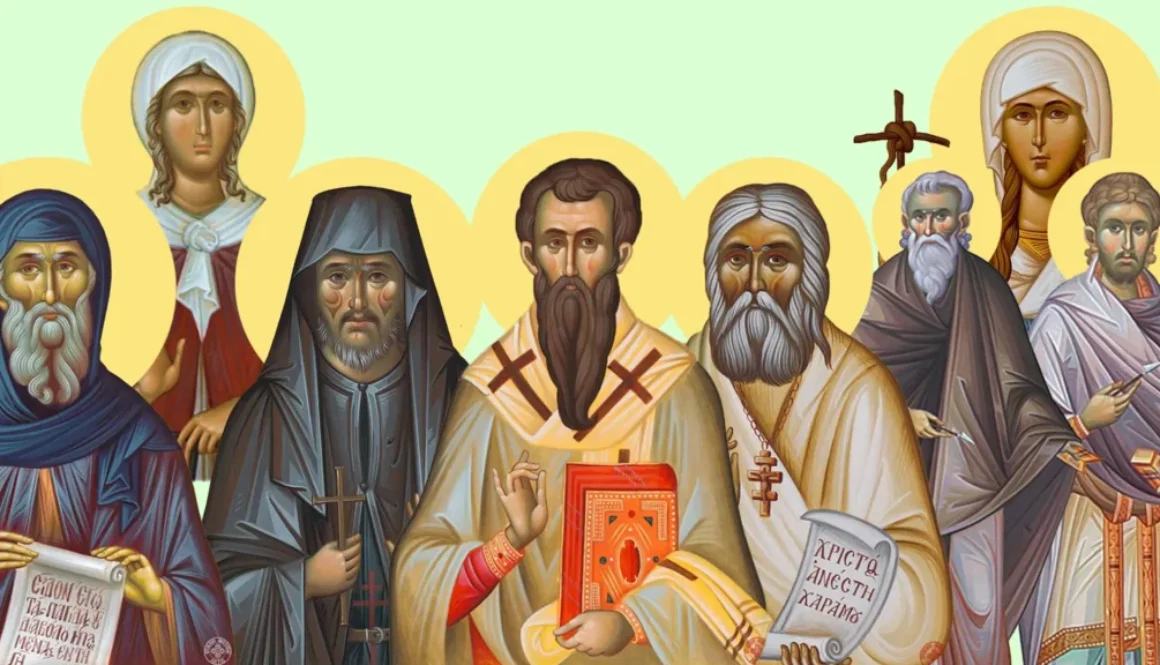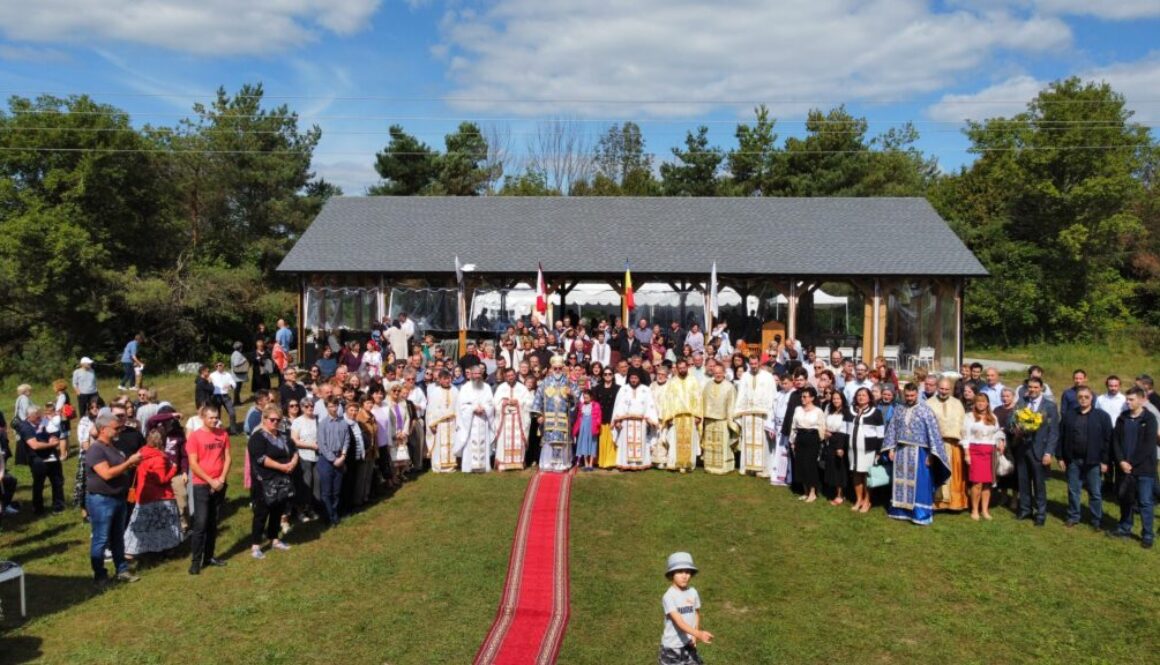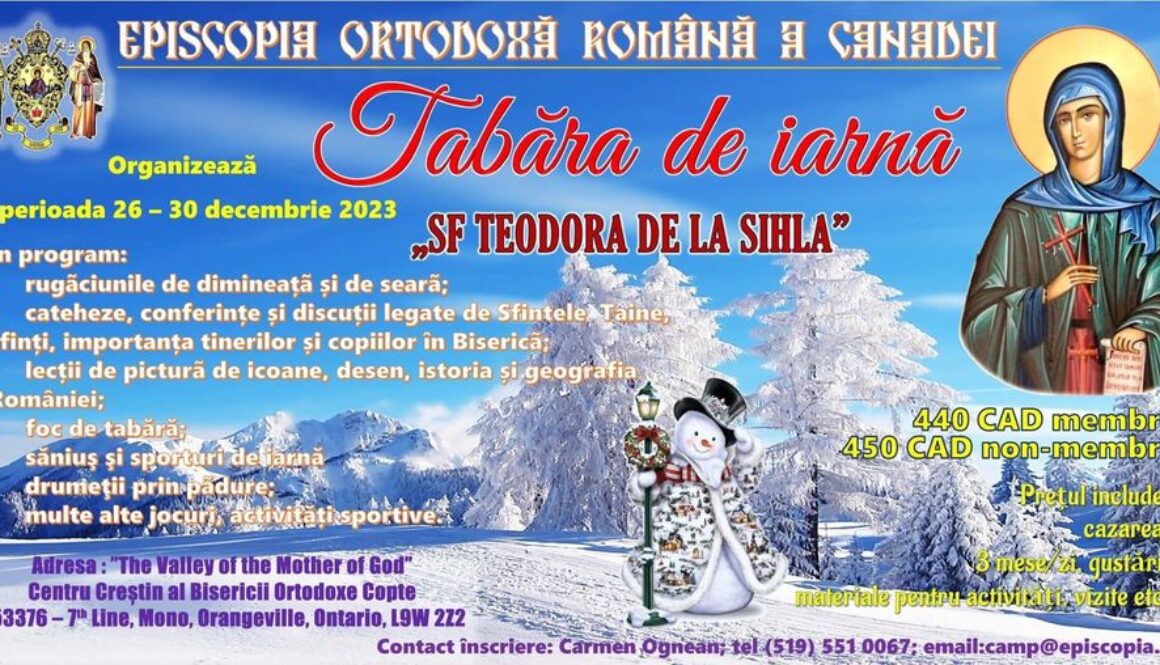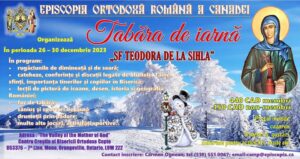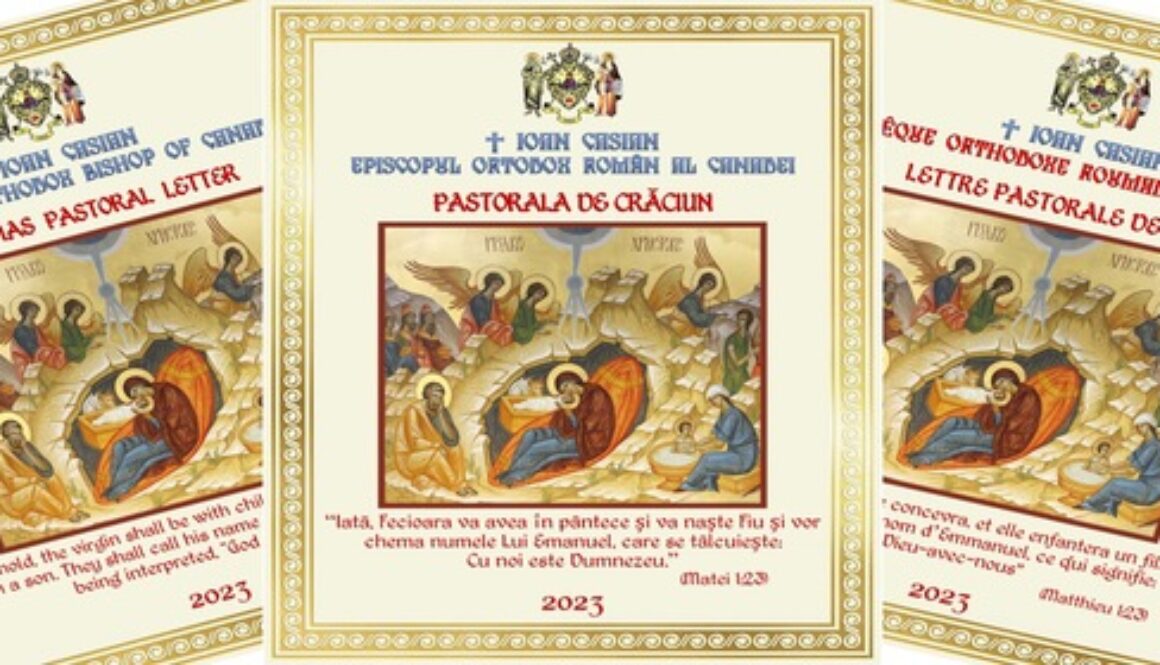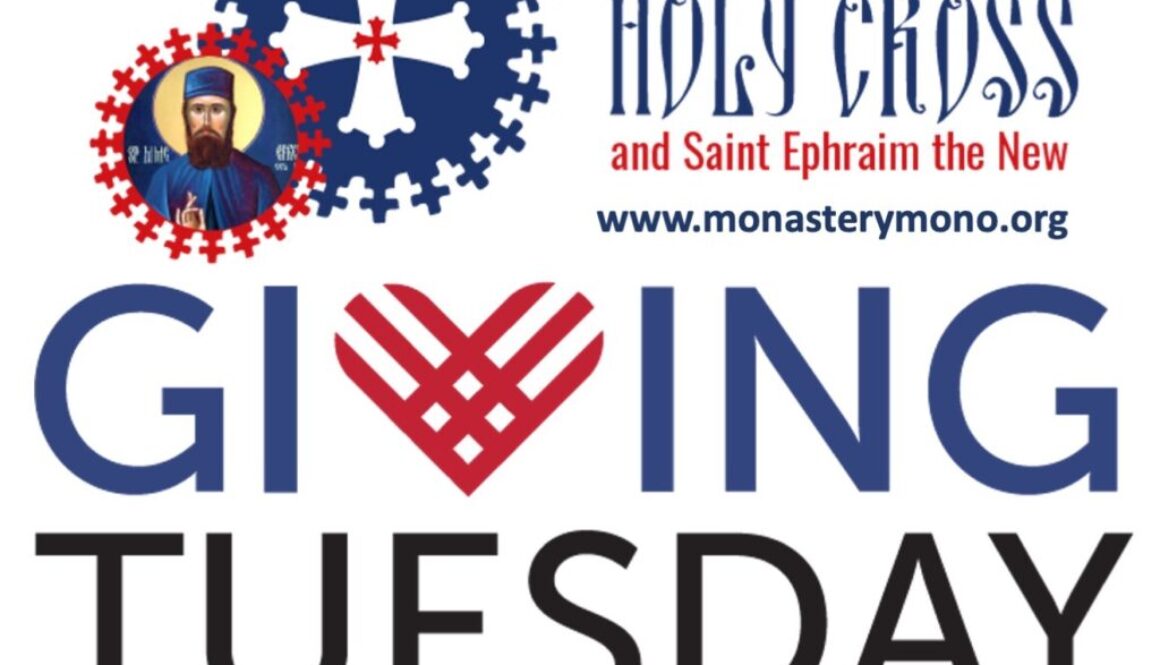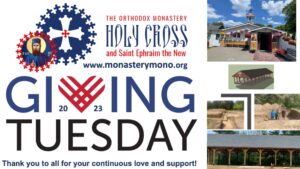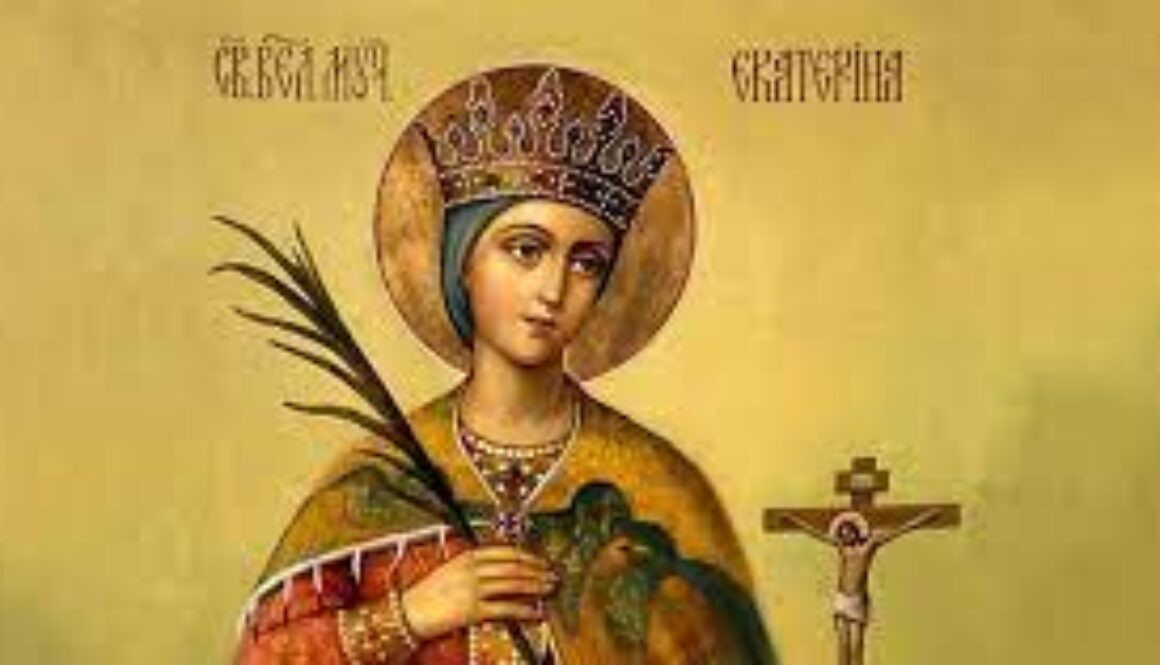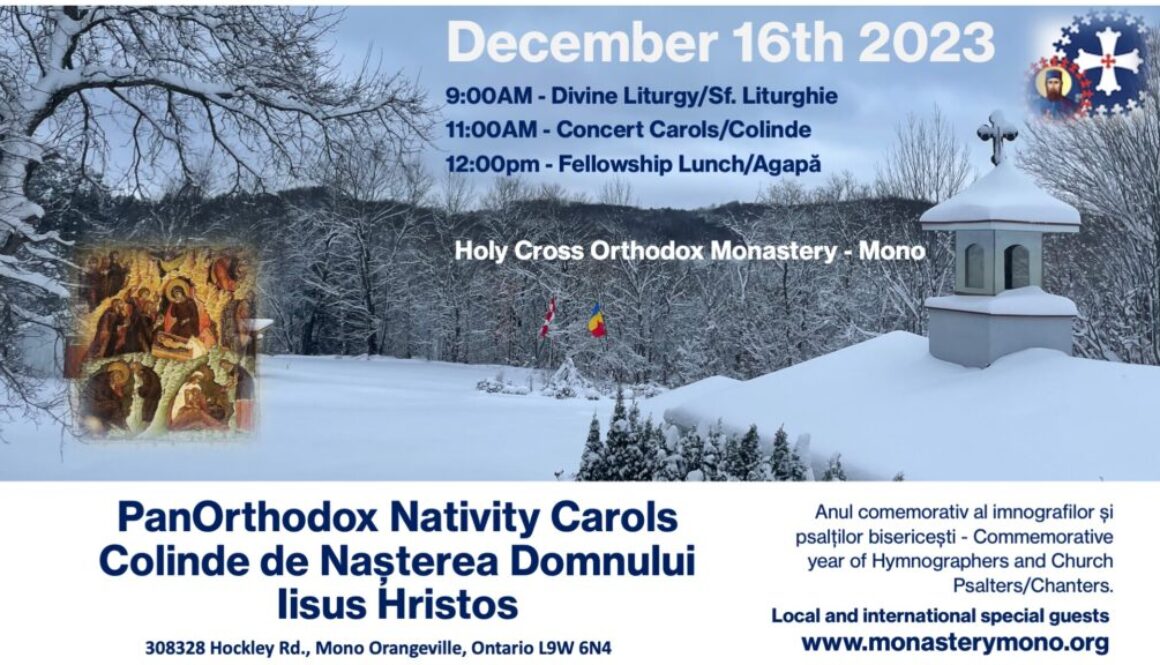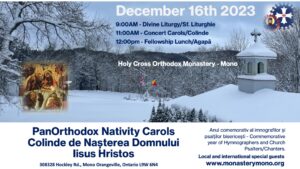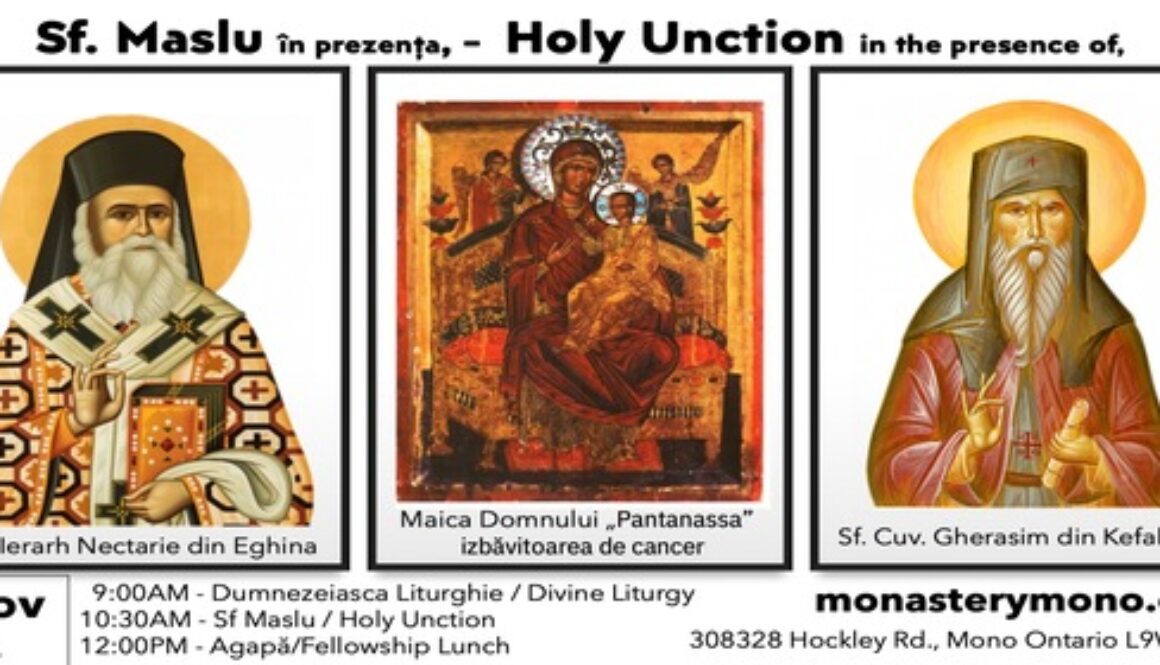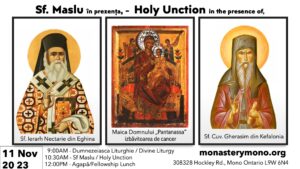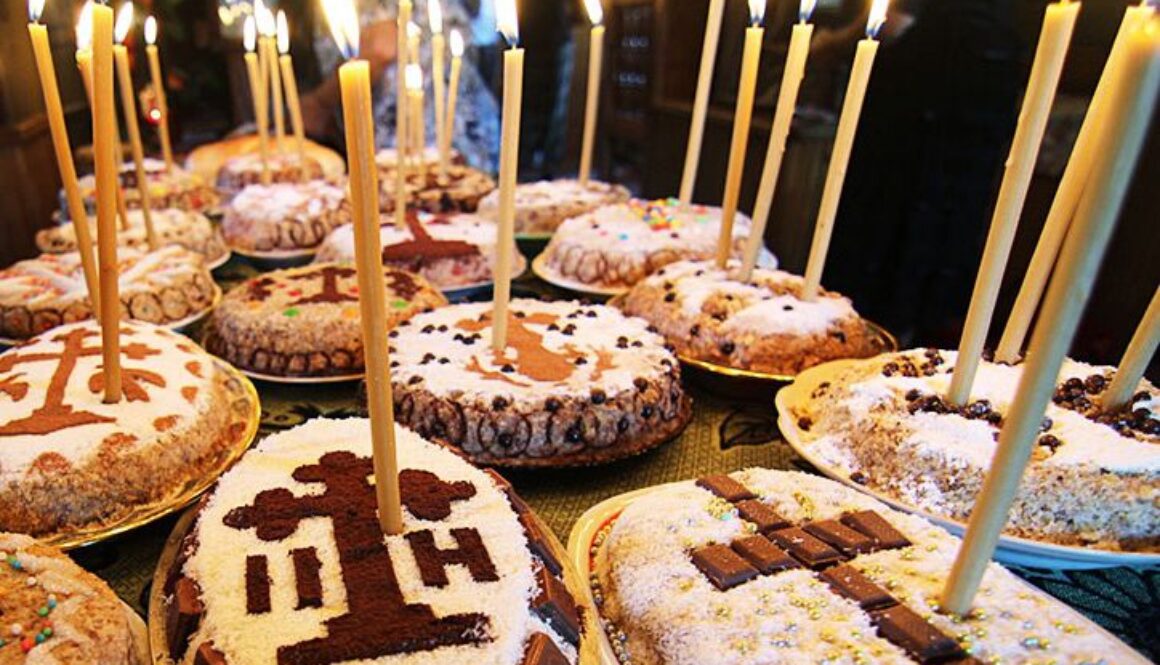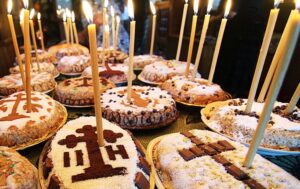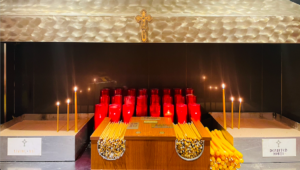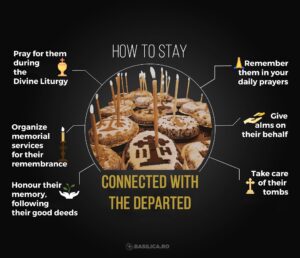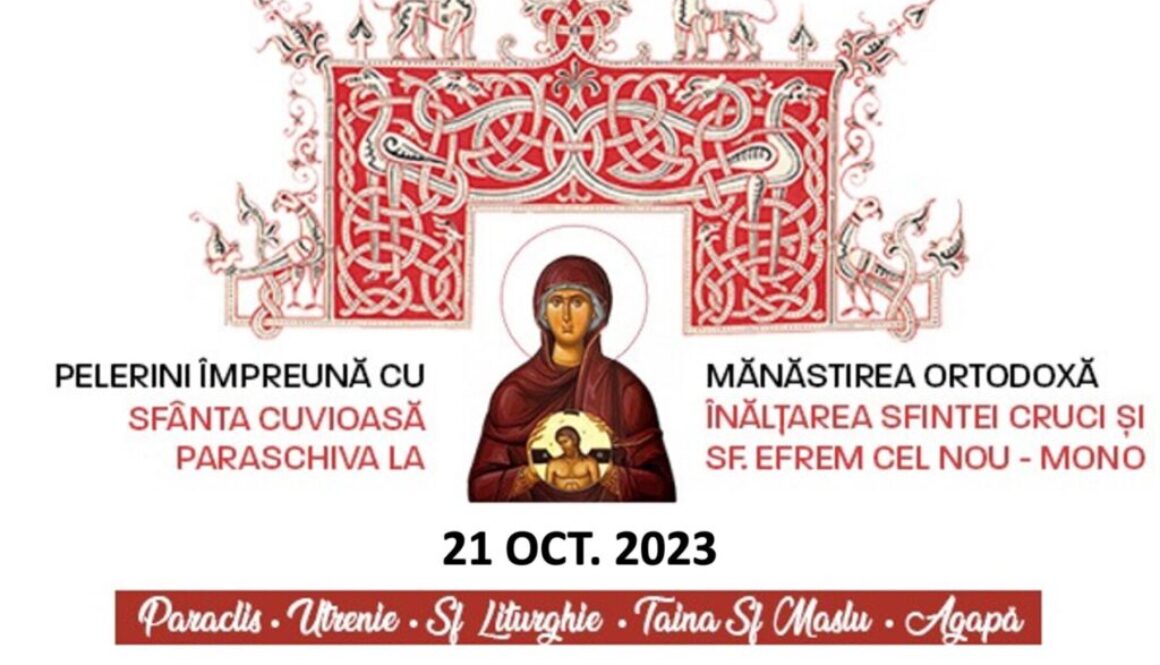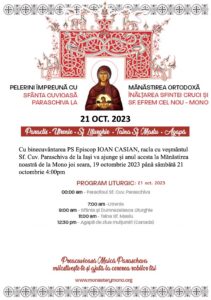Night Vigil Service January 31st, 2024 in honor of all the Holy Saints Wonderworkers and Unmercenaries commemorated in January by the Orthodox Church.
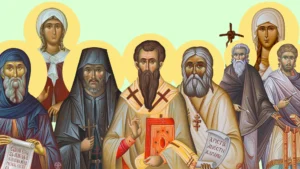
Night Vigil Service January 31st, 2024 in honor of all the Holy Saints Wonderworkers and Unmercenaries commemorated in January by the Orthodox Church.
January 31st, 2024 starting at 10:00pm – Vigil Service (Vespers, Matins, Blessing of the Water and at 5am Divine Liturgy)
Wonderworkers and Unmercenaries Saints pray for us!
 Send your Prayer request (both Living/Departed)for this service at holycrossorthodoxmonastery@gma
Send your Prayer request (both Living/Departed)for this service at holycrossorthodoxmonastery@gma

 ️
️ https://basilica.ro/en/8-holy-
https://basilica.ro/en/8-holy-
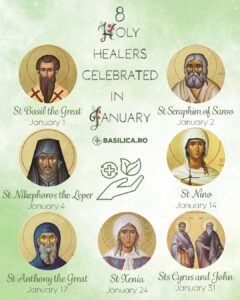

_____
Foto credit: Agenția de știri Basilica Basilica News Agency
2024 – Together for building the Main Church/ Împreună Ridicăm Biserica Mare a Mănăstirii – 2024
INVITATION to Save the Dates in 2024:
- 18 mai 2024 – Hramul Mic/Annual Spring Pilgrimage Day (Sf. M. Mc. Efrem cel Nou/St. Ephraim the New)
- 27 iulie 2024- Pelerinaj în cinstea Maicii Domnului (Icoana “Gherontissa”) / Annual Summer Pilgrimage Day in honor of our Mother of God
- 21 septembrie 2024- Hramul Mare/Annual Fall Pilgrimage Day (Înălțarea Sfintei Cruci/Exaltation of the Holy Cross)
Programul Liturgic / Liturgical schedule
Aprindeți o lumânare / Light a candle
Donations Altar de Vară/Pavilion
Donations Main Church/ Biserica Mare
Prayerfully yours in Christ’s service,
Fr. Hieromonk Polycarp (Athenagoras)
—
Mănăstirea Ortodoxă Înălțarea Sfintei Cruci și Sf. Efrem cel Nou
The Orthodox Monastery Exaltation of the Holy Cross and St. Ephraim the New
308328 Hockley Rd., Mono
Orangeville, Ontario L9W 6N4
t: 226.200.1074
New Website: www.monasterymono.org
Join our Facebook page: https://www.facebook.com/OrthodoxMonasteryMono/
Episcopia Ortodoxă Româna a Canadei / The Romanian Orthodox Diocese of Canada
The Orthodox Monastery “Holy Cross” is under the spiritual and ecclesiastical authority (omofor) of His Grace, Bishop Ioan Casian, of The Romanian Orthodox Diocese of Canada.
Mitropolia Ortodoxă Română a celor două Americi / The Romanian Orthodox Metropolia of the Americas
